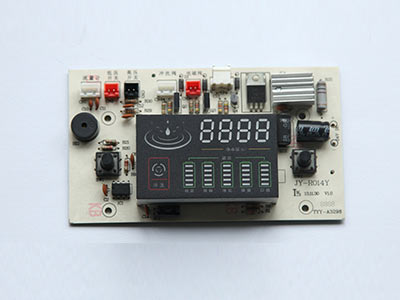The working principle of the air purifier control board mainly involves three main links of signal reception, processing and execution. The following is a detailed explanation of how it works:
Signal reception:
The air purifier control board receives signals from the user's operating instructions or environmental parameters through various input devices on it (such as buttons, touch panels, sensors, etc.). For example, the user can select different operating modes (such as automatic, sleep, high speed, etc.) or adjust the wind speed gear through the buttons on the control panel. At the same time, some advanced air purifiers will also be equipped with air quality sensors, which can monitor indoor air quality in real time and pass relevant information to the control board.
Signal processing:
After receiving these signals, the microprocessor (MCU) or controller on the control board will carry out a series of processing and judgment. According to preset procedures and algorithms, the microprocessor analyzes the received signals and decides how to control the various components of the air purifier. For example, if the air quality sensor detects that the indoor PM2.5 concentration exceeds the standard, the microprocessor may automatically adjust the working mode of the air purifier and increase the wind speed gear to speed up the purification.
Executive control:
After determining the control strategy, the microprocessor sends a control signal to the various components of the air purifier (such as fan motors, filters, negative ion generators, etc.). These control signals may be voltage signals, current signals or pulse signals, etc., which are used to drive the various components to operate in a predetermined manner. For example, when the microprocessor decides to increase the wind speed gear, it sends a control signal to the fan motor to accelerate its rotation.
Feedback and adjustment:
In the control process, some air purifiers will also monitor the operating status of various components and changes in environmental parameters in real time through feedback mechanisms such as sensors. If an abnormal situation is detected (such as blocked filter, overheating motor, etc.), the microprocessor will adjust the control strategy in time to protect the device and avoid damage. At the same time, some advanced air purifiers will automatically adjust the working mode according to changes in environmental parameters to achieve the best purification effect.
In summary, the working principle of the air purifier control board is a complex signal processing and control process, which involves multiple links such as signal reception, processing and execution. Through precise control and regulation, air purifiers can efficiently remove pollutants from indoor air and provide a fresh and healthy indoor air environment.About
Company Profile Corporate imageApplication CasesProduct
News
Company News Industry News Common problem+86 769-81555631-808
Monday to Sunday 8:30-21:30
(Welcome to call us for consultation)
 App
App